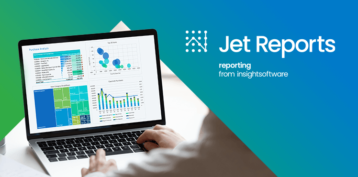Atlas Helps Equipment Rental Company Continue Their Speedy Services while Migrating to the Cloud


Operating since 1977, Speedy Services is the UK’s largest provider of tools, plant, and specialist equipment available for hire. With over 3,500 product lines, they hire out tools and equipment suitable for just about every profession, as soon as four hours after customers make a request.
The Challenge
Speedy Services had been using Atlas since before Damian Grundy, IT project team manager, joined over six years ago. Originally, they implemented Atlas as a data uploading tool. Grundy recalls that the “complex and convoluted” process in their Microsoft Dynamics AX12 ERP system was “time-intensive, with lots of fields to populate” in their input templates. While this could be bearable on an ad hoc basis, the team produced around 100-200 of these uploads per day, which was time-consuming as this could take anywhere from two minutes per product to 25 minutes per product.
The team needed a solution that could automatically recreate their recurring uploads (rather than having to recreate them from scratch each time), and that could move these updates into their system automatically. Atlas gave them these capabilities enabling their finance team to create and manage their own uploads into their AX system from within the familiar Microsoft Excel environment, without requiring deep technical skills.
As the Speedy Services team was about to upgrade from Dynamics AX to Dynamics 365 Finance and Supply Chain (D365), Grundy knew that retaining Atlas would be key to the success of their migration.
Building to Success with Atlas
While Grundy acknowledges that the finance team are “big fans of Excel,” he feels that adding Atlas makes it far easier for them to prepare bulk updates as “it’s quicker than doing it line-by-line in a spreadsheet”. This helps solve one of the key challenges of being a business that hires out its assets, which as Grundy notes “many IT systems don’t like things coming in and out of the system.” Atlas gives them the flexibility to capture and upload asset data in a way that reflects how their business works. This capability means that they are in a more comfortable place than they were six years ago when Grundy joined.
Speedy Services weren’t looking toward an alternative to Atlas before migrating, as maintaining its usage is a key driver to a successful migration. Keeping an environment familiar to the Finance team allows minimal interruption to data uploads, so they don’t have to change how all those uploads flow into the ERP, extending the project, changing more processes, and adding to stress among the users. Now that Speedy Services are looking to move to D365, they are keen to bring Atlas with them to help with the migration and to ensure they have the same capabilities that the team values from their AX deployment with D365. The Finance team are keen to keep Atlas, and Grundy agrees, saying “the users are accustomed to it and really like it.” “Implementing without Atlas would add around three months to the migration project,” estimates Grundy, also pointing out that “any change causes resistance, and Atlas helps the migration.” Grundy knows that “until we get Atlas, we’re not going live [with D365].” Any new ERP can be daunting to Finance, but “Atlas gives them that security blanket.”
As Speedy Services works to modernize processes across their business, IT are keen to give Finance autonomy over their own data and reporting, and Atlas allows trained users to remain “in charge of their own data,” according to Grundy, rather than “everything being an IT responsibility.”
Currently, Speedy Services use Atlas in a number of applications, “including Lightspeed (a mobile solution), mobile PDAs, and for transfers and collections.” So integrated is Atlas to Speedy Services, that they even use it for timesheets, as it just simplifies processes such as these. Often, Atlas is used “for fixing anything on a bulk basis very quickly.” Atlas is easy for the Finance team to use for data uploading–Grundy notes that “users like a simplified interface, and Atlas just shows them the fields they have to update. Simplifying anything for users is a win.” Atlas gives the users “validation to know that the data is accurate.”
Annata, a leading Microsoft partner, has been assisting Speedy Hire with the D365 migration project. Grundy applauds them for “always being on call”, adding that “we couldn’t have done it on time and to budget without them.” Grundy also notes that “Atlas is a key topic of discussion at every migration meeting.”
While Power BI is great for many departments, Grundy knows that “one solution doesn’t fit all,” with Atlas being ideally suited to the custom reporting and uploading needs of finance.
Navigating Success
Atlas has been central to the success of the finance team at Speedy Services, to the extent that they would not consider upgrading to D365 without being able to use Atlas:
- Time-saver: not only does Atlas eliminate time-consuming, manual report building, but it also saves time after the team moves to the Cloud, because for many users Atlas serves as their interface with the ERP, so keeping the same interface means these users don’t need to be retrained.
- Familiar: Users appreciate the familiarity of Atlas and that they won’t be forced to change the workflows and processes they know and understand.
- Versatile: Atlas works with both their legacy, on-premise ERP (AX) and their new Cloud ERP (D365)
- Allows Finance autonomy: Finance retains ownership over their own data and reporting, without having to rely on IT.
- Easy to use: A simplified, familiar Excel-based interface means it’s easy for the Finance team to navigate.
Atlas is crucial to our Finance team. We know that, until we get Atlas, we’re not going live with the migration.






